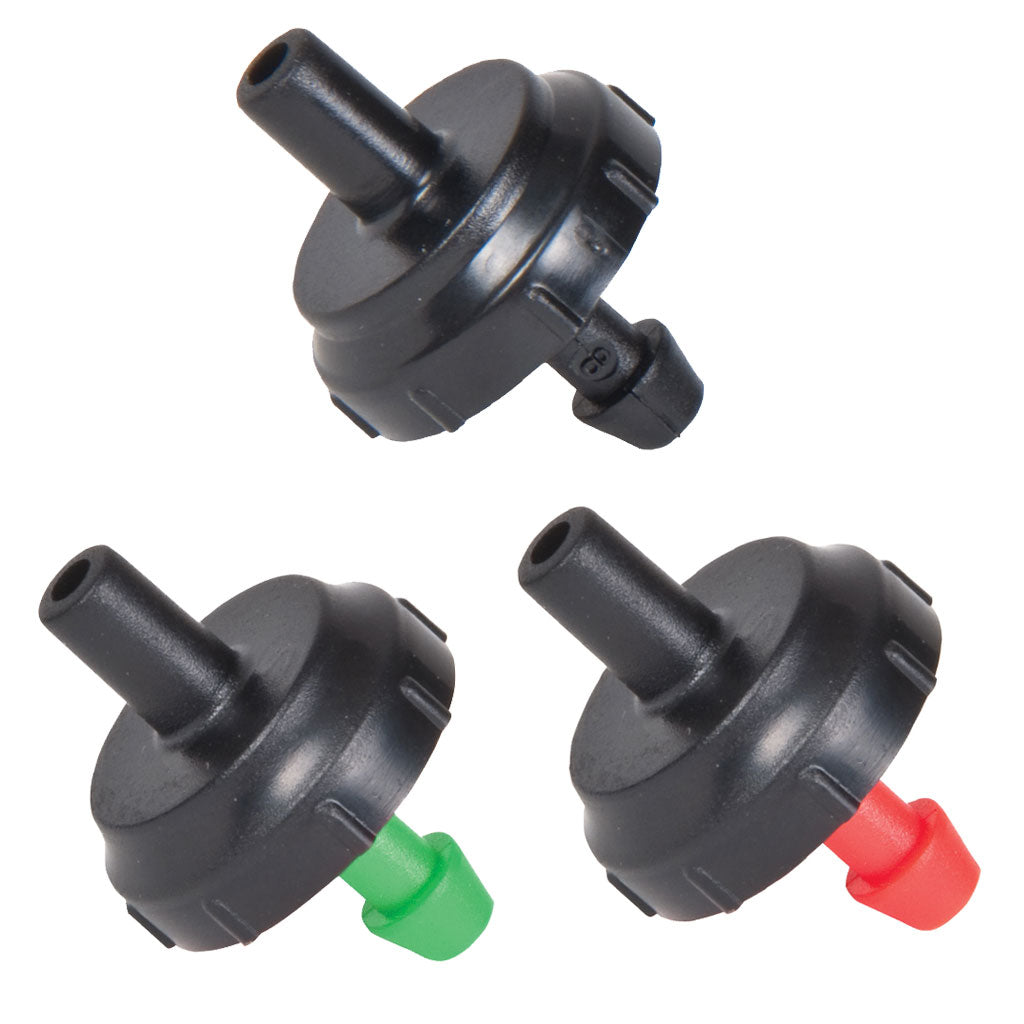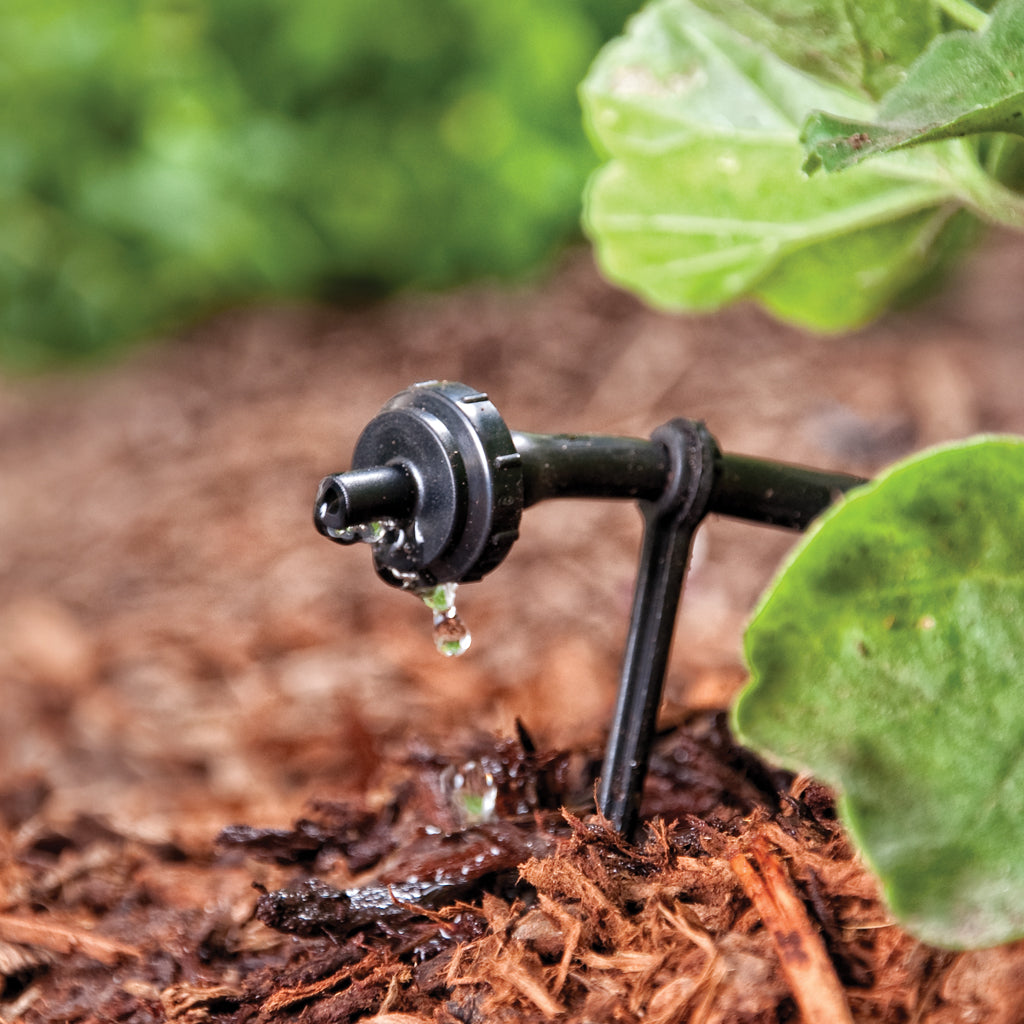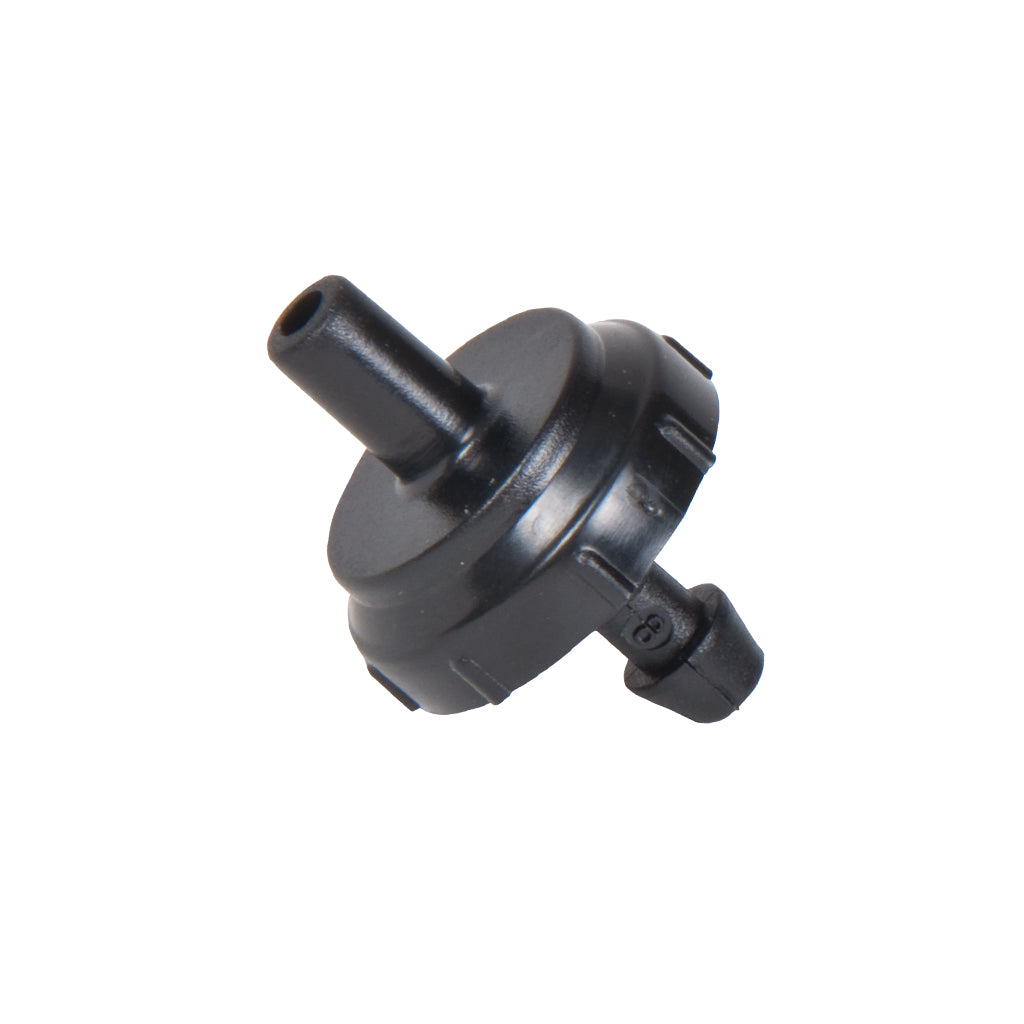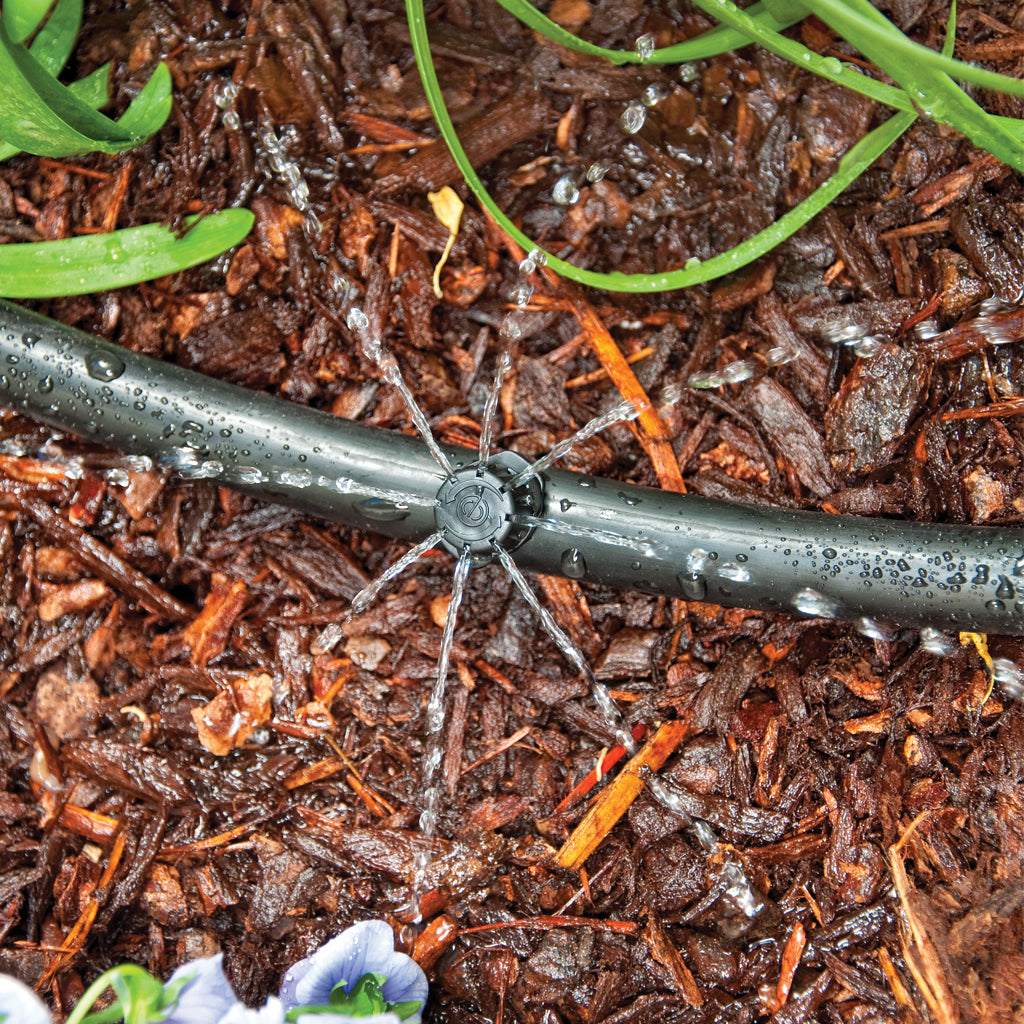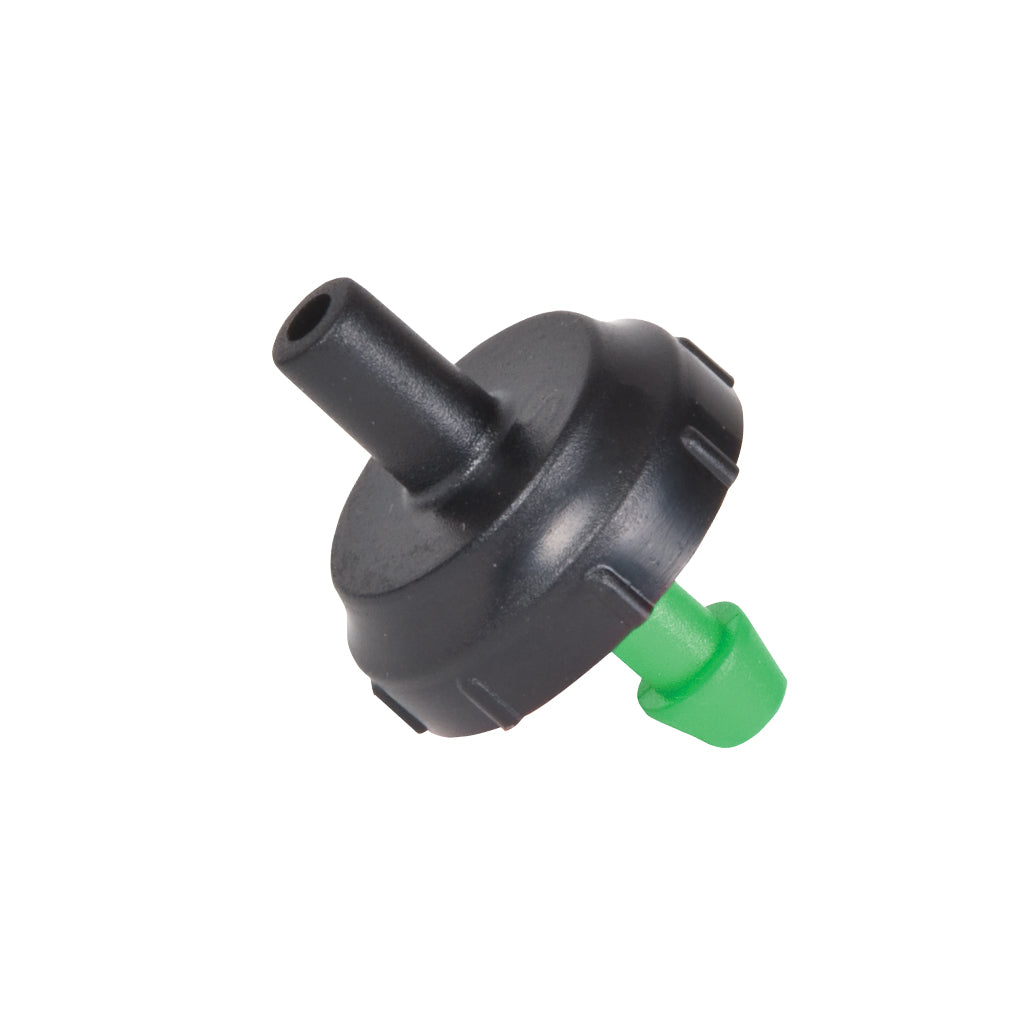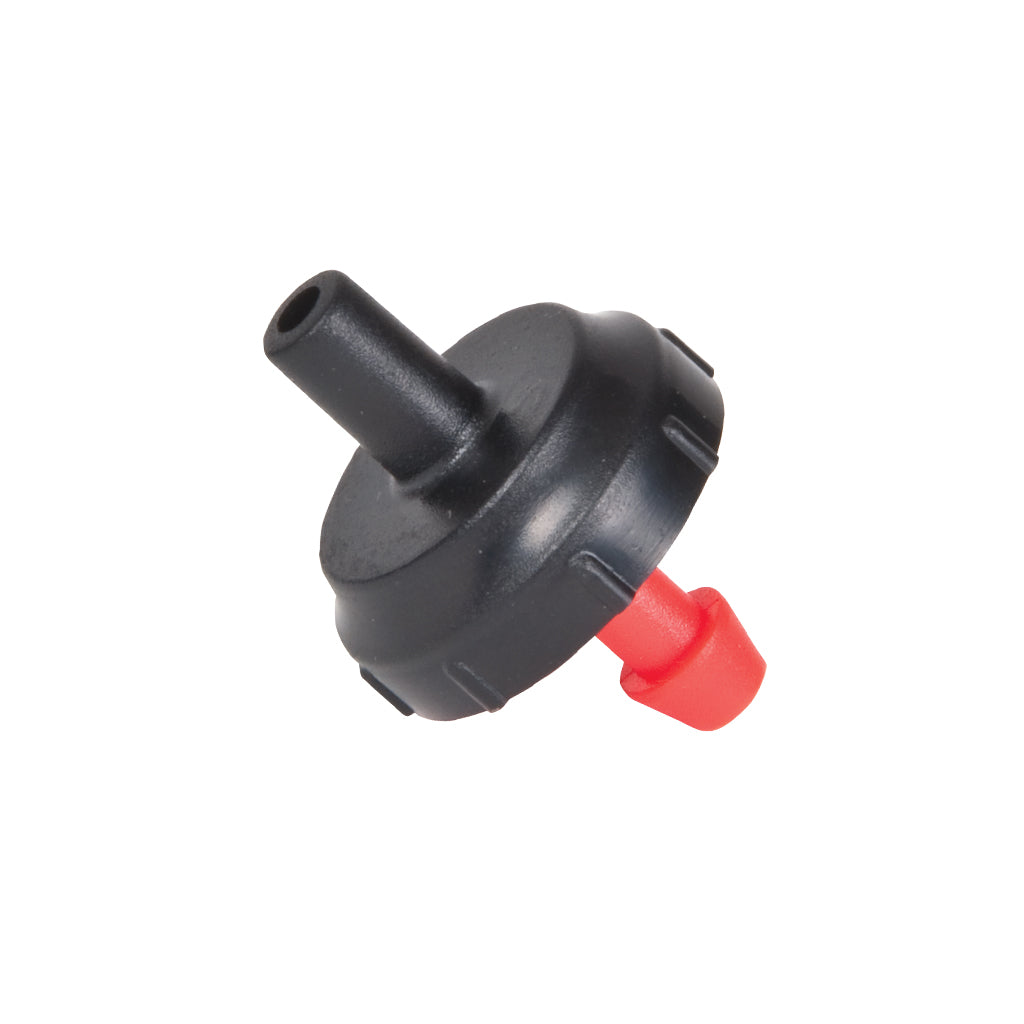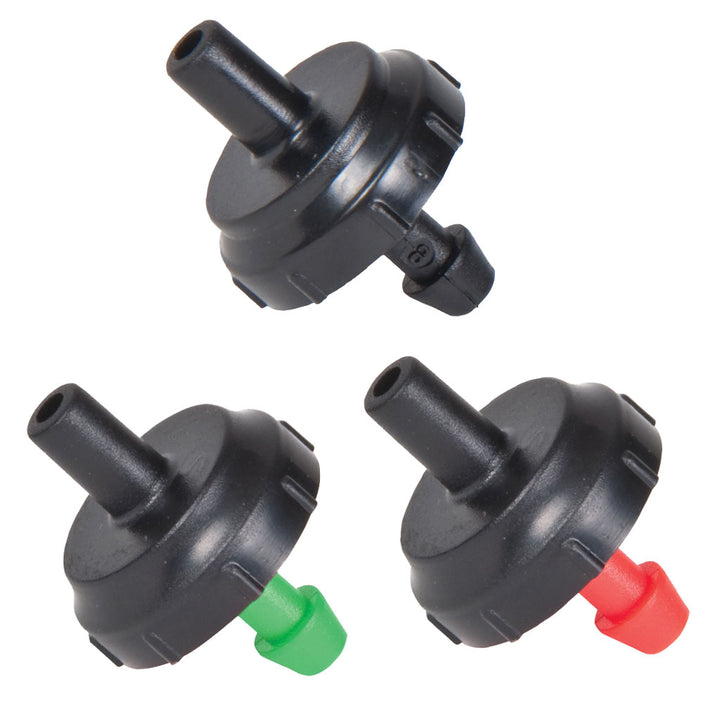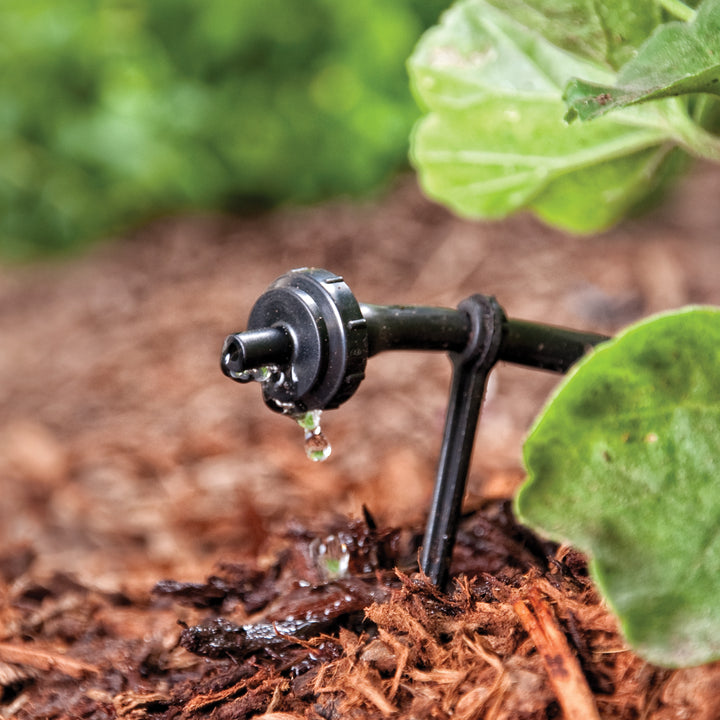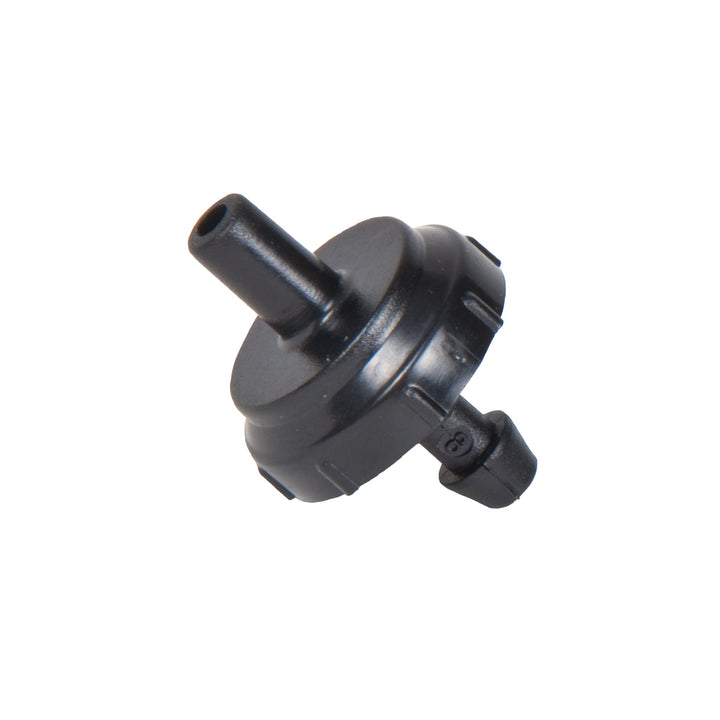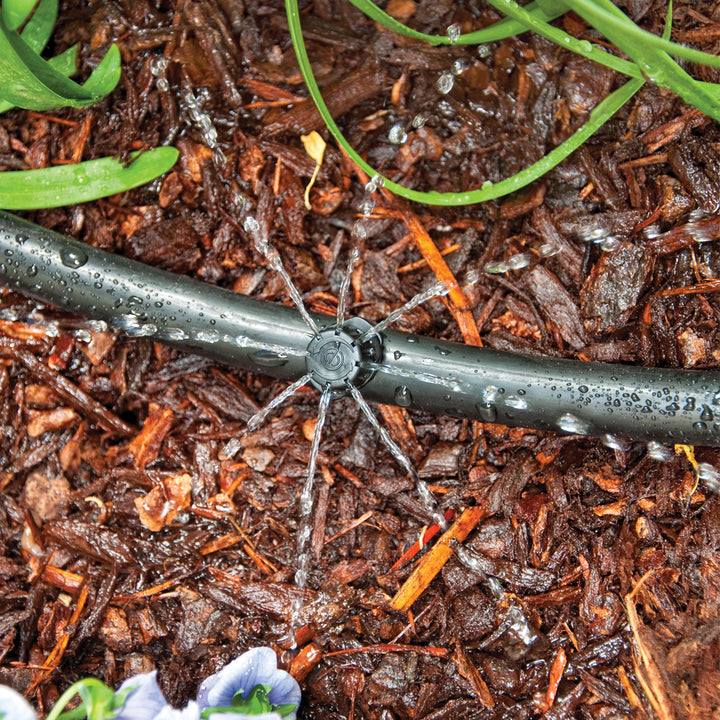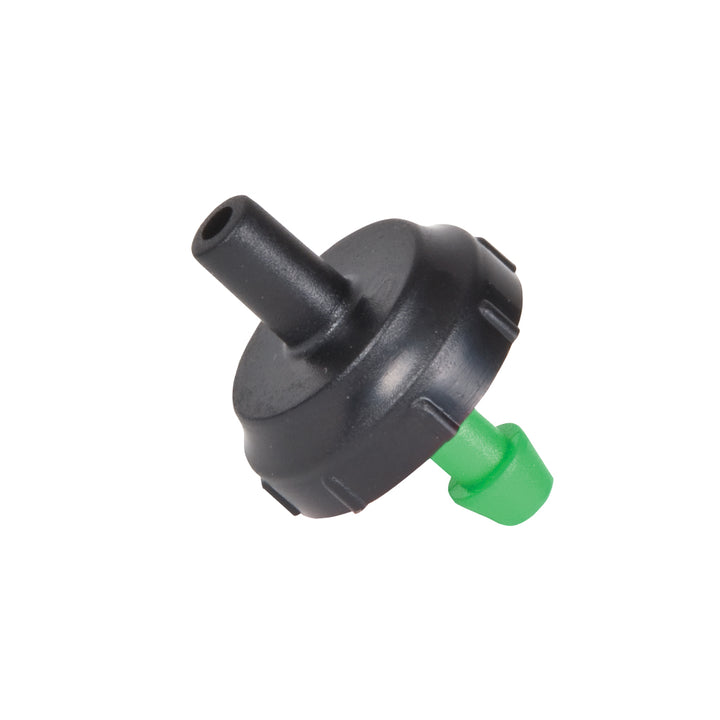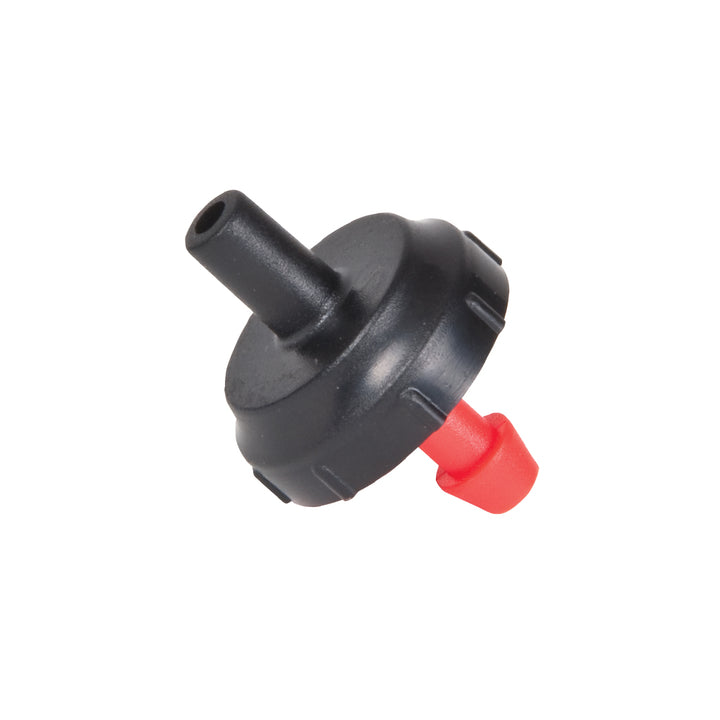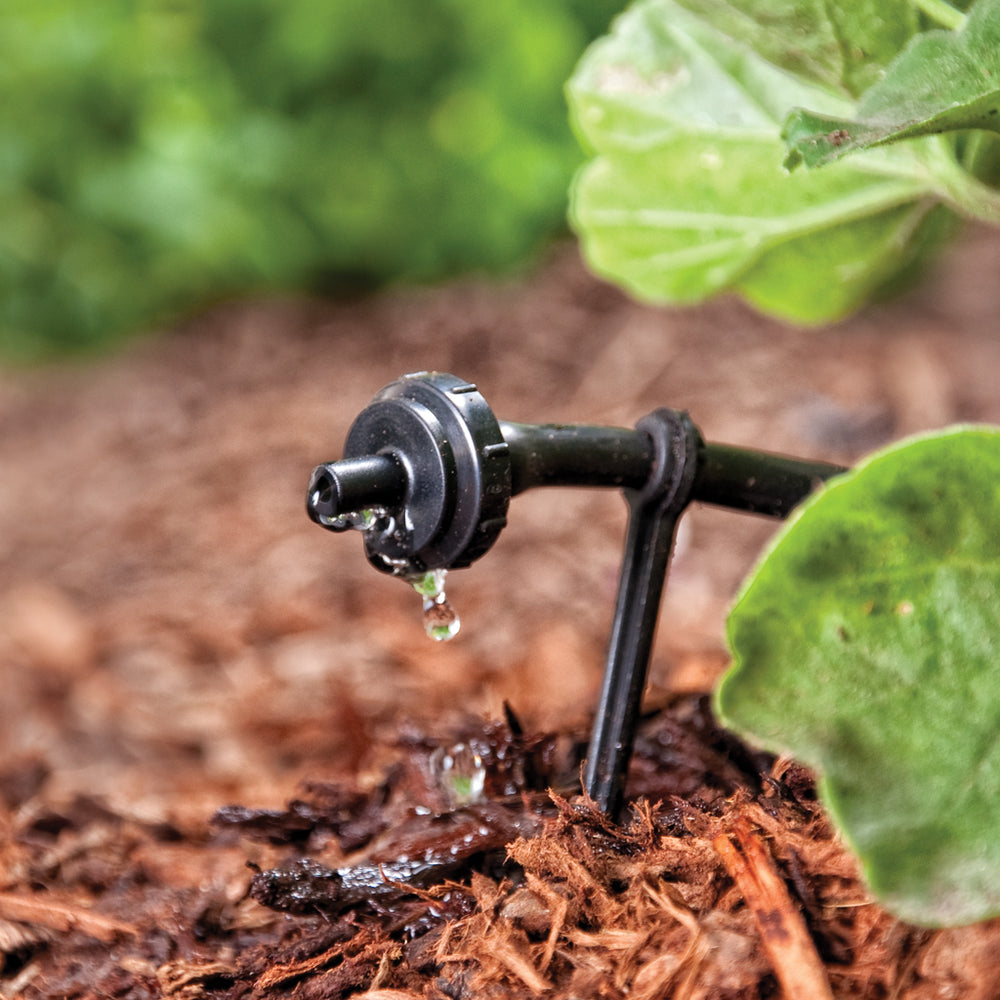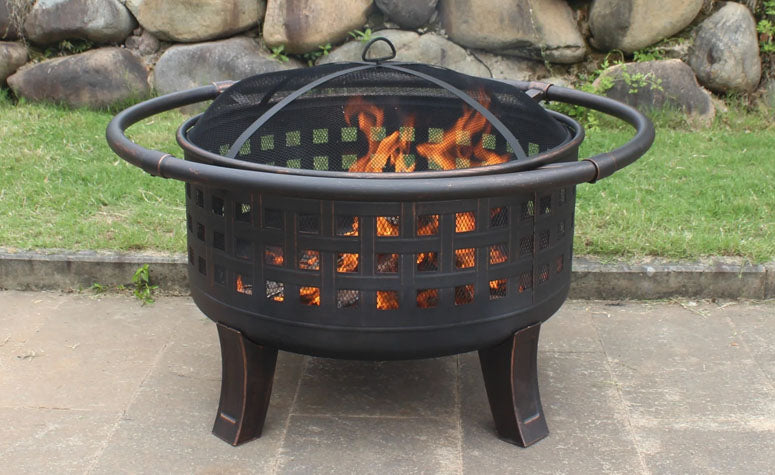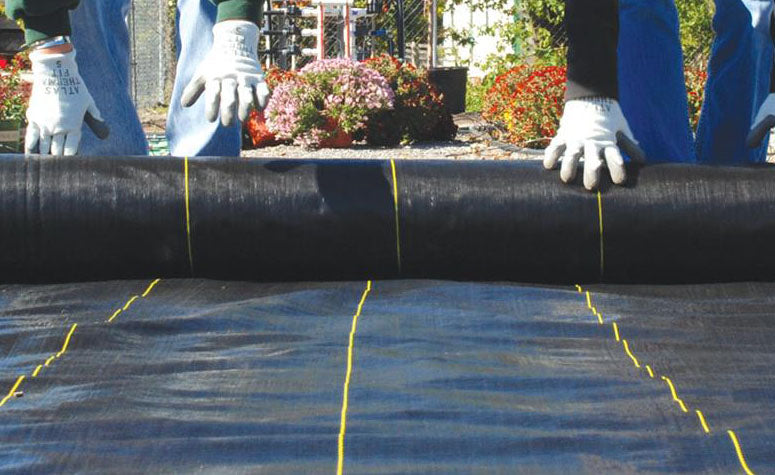DIG Pressure Compensating (PC) Drip Emitters are designed to produce a consistent flow rate over a pressure range of 10 to 55 PSI so your plants get the water they need. These PC Drip Emitters are continuously adjusting to varying water pressures, ensuring a constant flow from each drip emitter regardless of pressure fluctuations, varying elevations along the line or changes in temperature. Commonly used for shrubs, ground covers and trees, pressure compensating irrigation drippers offer a convenient way to water both new and existing landscapes, including difficult terrain such as slopes, oddly-shaped areas and sites with high winds.
At Greenhouse Megastore, we offer color-coded pressure regulator drip emitters in money-saving 10-packs. The 1 GPH drip emitter is red, the 2 GPH drip emitter is green and the 4 GPH emitter is blue. We have a 100% customer satisfaction guarantee on all purchases. Watch the product videos and read the instructions below for how to connect PC drip irrigation emitters to drip line, poly tubing and PVC pipe. If you still have questions, call us at 1-888-281-9337 to speak with a knowledgeable sales representative.
DIG Pressure Compensating Drip Emitter Features:
- Available in three colors so that it is easy to identify flow rate
- Ideal use for slopes, oddly shaped areas, sites with high winds and long runs.
- Pressure compensating feature enables the use of longer laterals under a wide range of pressures
- Turbulent flow through a large labyrinth water passage and floating diaphragm help prevent clogging
- Contain a diaphragm that continuously adjusts to varying water pressure to ensure a constant flow rate, even in challenging topographical conditions
- Raised nipple outlet prevents water runoff along the drip lateral
- Resistant to chemicals and fertilizers used in landscape application
- Quarter inch barbed inlet for installation into drip tubing or 1/4" distribution tubing
- Use for any layout in residential gardens
- Constructed of UV-resistant, durable plastic material to withstand the most adverse conditions
Product Video
Installation Guide
The 1, 2 and 4 GPH PC Drip Emitters contain a silicon diaphragm that continuously adjusts to varying water pressures. At the same time, it allows particles to pass through the drip emitter's water passage, providing reliable performance and a longer life. This method of flushing with a large flow path allows the drip emitters to operate at optimal flow rates under extreme conditions. These three models of PC drip emitters discharge the same amount of water under a pressure range of 10 to 45 PSI, allowing for higher uniformity and longer lateral run on any topography. This feature allows the number of drip emitters on a single drip tubing to be maximized while maintaining an even flow rate from each emitter along the line
Install the drip emitters using one of two methods: either directly into the drip tubing or at the end of the micro tubing. Within the layout, we highly suggest a minimum of two drip emitters should be placed on opposite sides, under the plant canopy, centered between the plant trunk and the plant canopy edge.
When using single drip emitters, it is important to select the correct flow rate to achieve a wetted pattern shape that can cover at least 70% of the plant root zone. In sandy soil, water tends to drain quickly (gravitational force) with little lateral movement, so applying a higher flow rate over a given period will produce a wider pattern. Using 0.5 GPH drip emitters for one hour will provide a smaller wetted area then using 1 GPH emitters for the same time due to the soil characteristics.
One of the most common installation errors when installing drip irrigation is using too few emitters. All too often, only a single emitter with preset flow is placed at the base of a newly planted tree, shrub or rose. In clay soils, a single drip emitter can wet a 3-4 foot diameter; on sandy soils, the same layout using the same drip emitter will only wet an area of a few inches. Given the fact that plant roots can grow up to a few feet a year depending on the plant and location, after one year, the diameter of the root system would be much larger than the area covered by the one drip emitter. A single drip emitter per tree or shrub could restrict root development as early as the first year after planting if flow is not adjusted or a drip emitter is not added. We highly recommend adding more than one drip emitter per plant depending on plant size.
Installation suggestions
Basic installation recommendations for this product include first reviewing the area and then making a drawing of the garden or site with your preferred layout. If automation is required, use one of DIG's hose end timers or battery-operated controllers. The ideal controller should have flexible scheduling and two to four start times per day for added flexibility.
Start the installation from a PVC pipe or to pipe thread
Recommendations: Wrap all male pipe thread fittings with Teflon tape. Do not use pipe cement on the valve as it will damage the valve and void the warranty.
- If the system installation is started from a PVC pipe, first shut off the main water supply.
- If an automated system is preferred, we recommend installing a 3/4-inch ball or gate valve before the battery operated controller or AC valve if used. This ball valve can be very useful as an emergency backup to turn the system off. This type of arrangement is used by professional installers.
- Turn the water supply on to flush the line and then shut the water supply off using the new ball or gate valve.
- Install an AC valve or battery operated controller, wrapping Teflon™ tape on the male pipe thread fittings.
- Turn the water supply on again to pressurize the system. The unit will open momentarily and then will shut off.
- Test the valve or the battery operated controller and make sure that it is working correctly.
- After the AC valve or battery operated controller, add a 3/4-inch screen filter with 155-mesh. The screen filter is used to protect the drip system. Then, add a preset 25 PSI pressure regulator or adjustable pressure regulator. The pressure regulator is used to lower the pressure to the suggested operating pressure for a drip system. Follow this with a 3/4-inch swivel adapter to the drip tubing or a 3/4-inch PVC thread slip adapter to the PVC line.
Start the installation from a faucet or hose thread
- If an automated system is preferred, install a hose end timer.
- Test the hose end timer and make sure that it is working correctly.
- After the timer, add a backflow device and then add a 3/4-inch filter to protect the drip system. Next, install a 25 PSI pressure regulator to lower the pressure to the drip system, followed by a swivel adapter to connect the drip tubing.
Product installation
- Using the drip tubing as the main lateral or as a sub lateral, lay out the drip tubing per your layout drawing. Secure the drip tubing to the ground using stakes in key areas and add more stakes as you unroll the drip tubing. Add stakes every 20-30 feet and at the end of each section or as needed. An extra 1% of drip tubing length should be added to each lateral to compensate for contraction at low temperature.
- Throughout the installation and per your drawing layout, add (if needed) 1/2-inch fittings such as tees and elbows, leaving the end of the drip tubing open. To install the 1/2-inch compression drip fittings, cut the drip tubing with a hand pruner, being careful to keep dirt from entering the line. Hold the fitting in one hand and the drip tubing in the other and force the drip tubing into the compression fitting by wiggling it from side to side.
- The drip emitters are installed along the drip tubing at varying or specific intervals. The distribution uniformity of water from the drip emitters along the line depends on the incoming pressure, the number of drip emitters used per lateral and the length of the laterals. Special care should be taken to ensure high uniformity of water along the laterals by not exceeding the product recommendations (see Product Specifications).
- To install the drip emitter, you may use one of the options suggested:
- Option 1:Punch a hole into the drip tubing using the small punch or the gun punch and snap the barbed side of the drip emitter into the drip tubing
- Option 2: Install the drip emitters into the micro tubing by cutting a length of two to four feet (we highly recommend not exceeding four feet) of 1/4-inch micro tubing. To the micro tubing end, insert a 1/4-inch barb. To the other end of the micro tubing, insert the barbed side of the drip emitter, add a stabilizer stake and secure to the ground. Punch a hole into the drip tubing using the small punch and insert the 1/4-inch barb at the end of the micro tubing into the drip tubing
- Turn the water on and flush the line.
- Close the end of the drip tubing using the hose end or figure "8".
- Pressure-test the system to identify leaks in the drip tubing laterals, fittings and micro tubing, then program the hose end timer or battery-operated controller.




